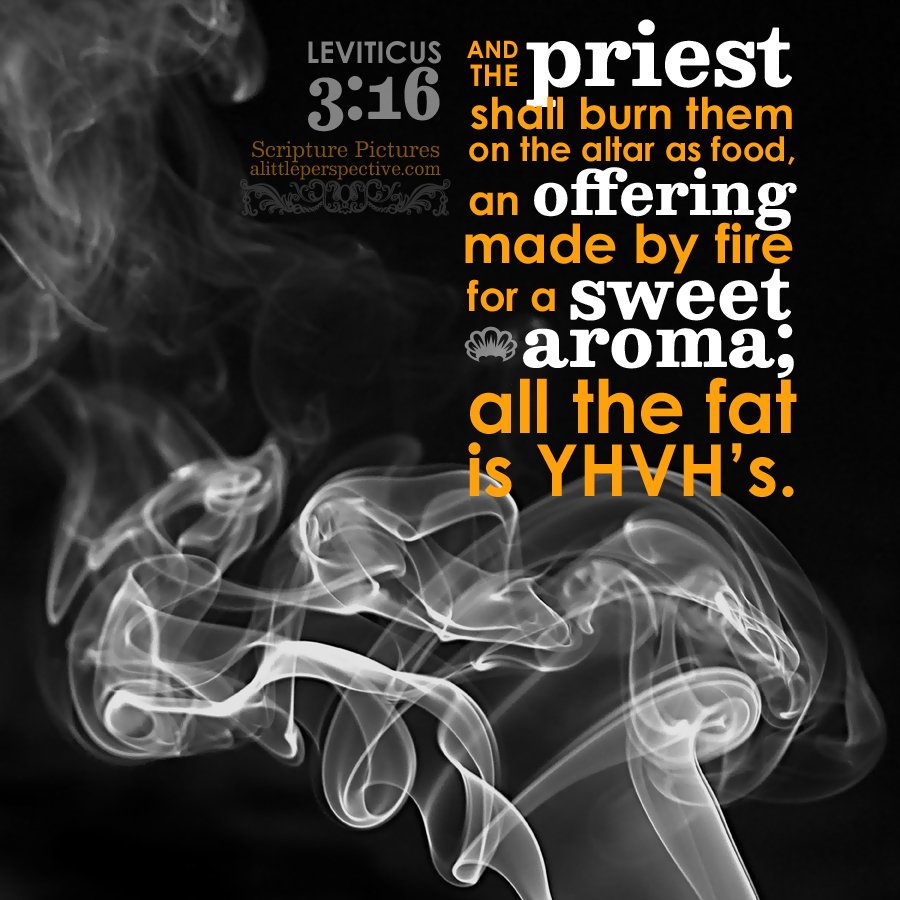Read Leviticus 3 here or at Bible Gateway.
The Hebrew paragraphs:
3:1-5 {p} The law of the peace offering (shelem) of the herd
3:6-11 {p} The law of the peace offering (shelem) of the flock
3:12-17 {p} The law of the peace offering (shelem) of the goats
A peace offering, according to the Hebrew Root Words, is shelem, from the same root as shalom:
Strong’s H7965, shalom, a concrete noun meaning, “completeness, soundness;” from Strong’s H7999 שלם shalam, a primitive root meaning, “to be whole, sound, or safe.” The ancient pictographs are shin + lamed + mem, but the Ancient Hebrew Lexicon says that the shin had been transposed from an original sin.
sin ס = the thorn, thus grab, hate, protect
lamed ל = the shepherd’s staff, thus teach, yoke, to, bind
mem מ, ם = the water, thus chaos, mighty, blood
Thus the parable being told is of the thorns (sin) which the shepherd (lamed) drew the sheep, taking away from them that which was causing pain or trouble (mem), or of the thorns with which the shepherd surrounded the sheep, adding to them that which would prevent pain or trouble (for a shepherd surrounded the sheep fold with thorn bushes at night, in order to prevent predators from coming in among the flock).
So shalam means, taking away from, or adding to, whatever is necessary to make complete or whole. Thus to be at peace, or to be in a covenant of peace, is to be complete, with nothing missing that should be there, and with nothing added that should not be there.
The idea is that when YHVH adds blessing to, or subtracts cursing from a man, to bring him to completion or wholeness, to bring him into shalom, the man responds with a peace offering, a shelem; thus some Bibles translate shelem as a thank offering.
The shelem was a voluntary offering brought as a form of worship by a man in right relation with God.
If there are questions, this is a good resource:
Leviticus 1 through 3, The voluntary burnt offerings – Christine Miller

















Leave a Reply